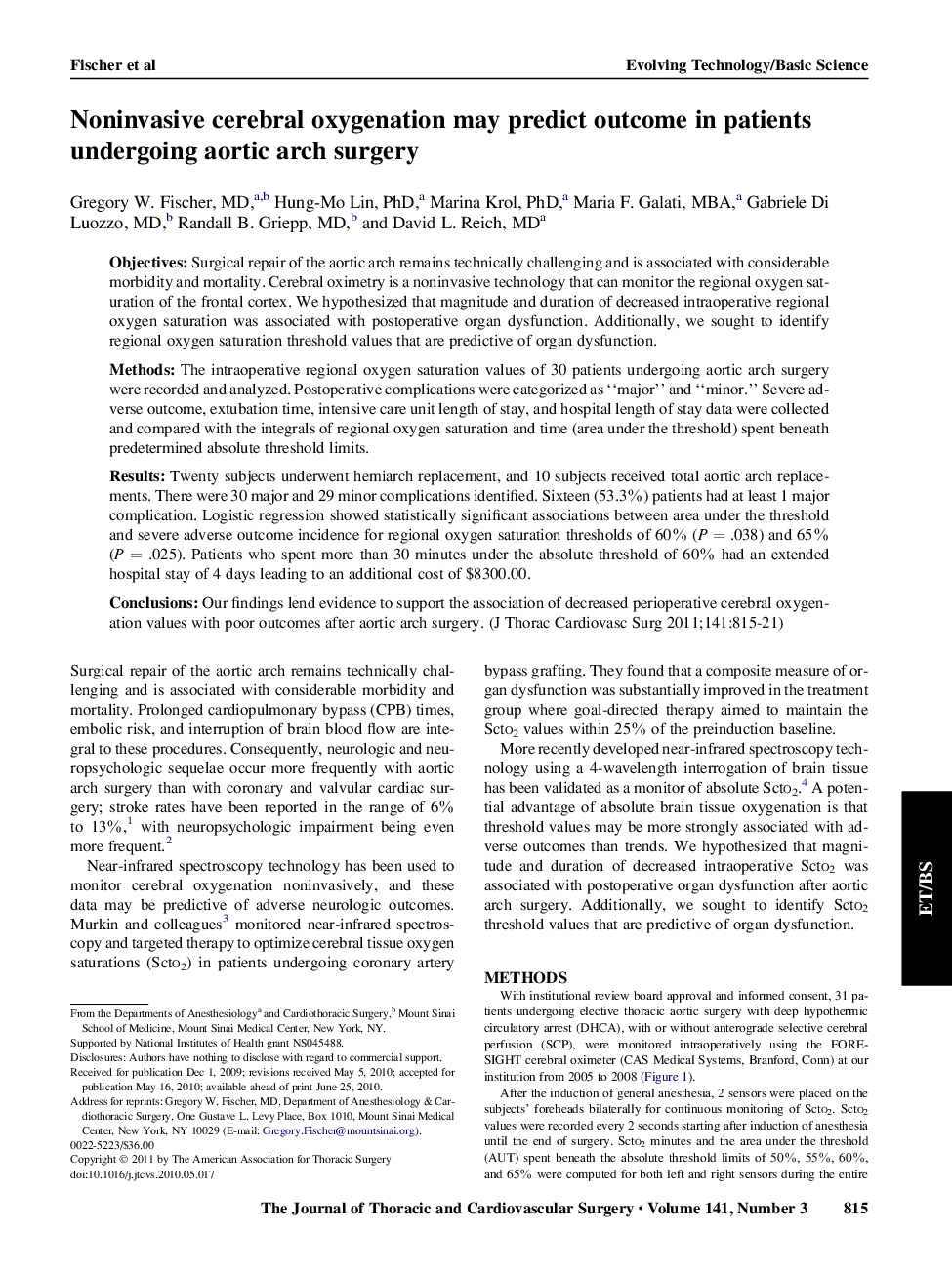| Article ID | Journal | Published Year | Pages | File Type |
|---|---|---|---|---|
| 2981639 | The Journal of Thoracic and Cardiovascular Surgery | 2011 | 7 Pages |
ObjectivesSurgical repair of the aortic arch remains technically challenging and is associated with considerable morbidity and mortality. Cerebral oximetry is a noninvasive technology that can monitor the regional oxygen saturation of the frontal cortex. We hypothesized that magnitude and duration of decreased intraoperative regional oxygen saturation was associated with postoperative organ dysfunction. Additionally, we sought to identify regional oxygen saturation threshold values that are predictive of organ dysfunction.MethodsThe intraoperative regional oxygen saturation values of 30 patients undergoing aortic arch surgery were recorded and analyzed. Postoperative complications were categorized as “major” and “minor.” Severe adverse outcome, extubation time, intensive care unit length of stay, and hospital length of stay data were collected and compared with the integrals of regional oxygen saturation and time (area under the threshold) spent beneath predetermined absolute threshold limits.ResultsTwenty subjects underwent hemiarch replacement, and 10 subjects received total aortic arch replacements. There were 30 major and 29 minor complications identified. Sixteen (53.3%) patients had at least 1 major complication. Logistic regression showed statistically significant associations between area under the threshold and severe adverse outcome incidence for regional oxygen saturation thresholds of 60% (P = .038) and 65% (P = .025). Patients who spent more than 30 minutes under the absolute threshold of 60% had an extended hospital stay of 4 days leading to an additional cost of $8300.00.ConclusionsOur findings lend evidence to support the association of decreased perioperative cerebral oxygenation values with poor outcomes after aortic arch surgery.
